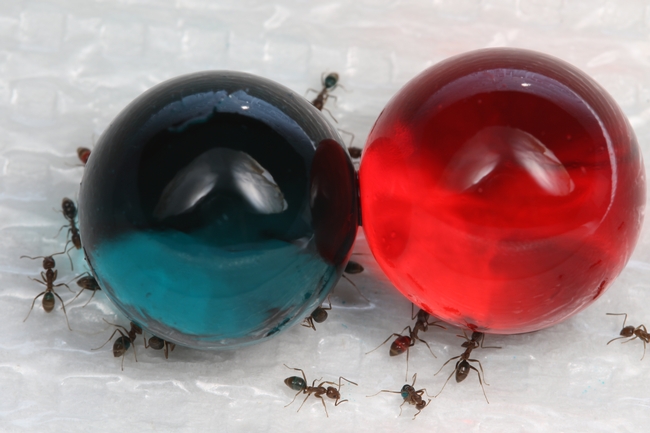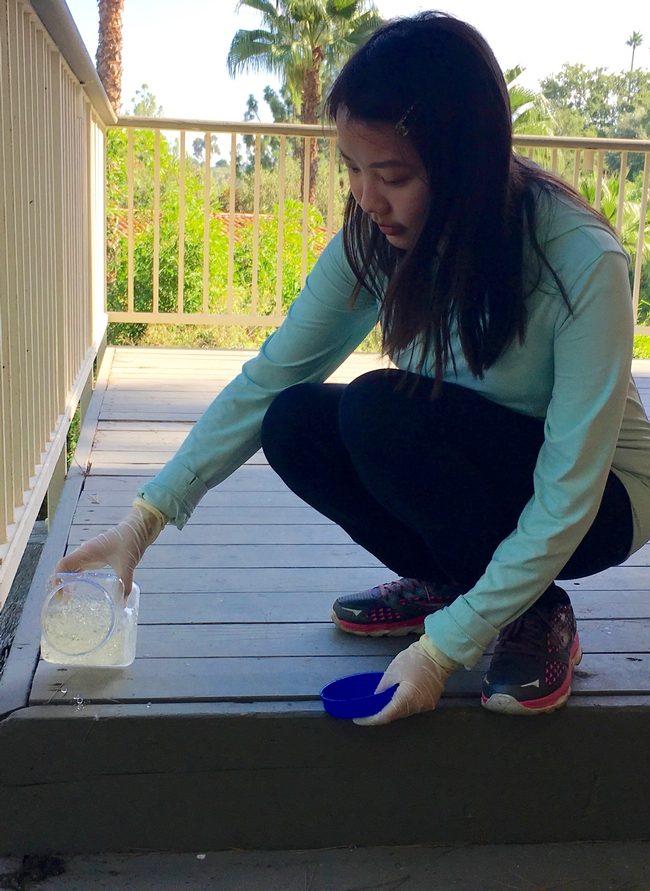[From the Spring issue of the UC IPM Green Bulletin]
Argentine ants can be a damaging ant pest species in both agricultural and urban environments in California. Outdoors, they disrupt biological control by tending honeydew-producing pests and protecting them from natural enemies. Argentine ants are also common invaders of urban residential settings, making them the nuisance ant species most often treated by pest management professionals (PMPs).

Application restrictions
In an effort to reduce pesticide runoff, in 2012 the California Department of Pesticide Regulation (DPR) issued restrictions for pyrethroid use on hardscapes by licensed professionals. In addition, the U.S. Environmental Protection Agency approved new label amendments in April 2017 for fipronil products that will significantly change the way PMPs can apply fipronil in outdoor settings for Argentine ant control. While it is not yet known how these new changes will reduce off-site pesticide contamination, it is a good time to start investigating effective alternatives for ant control.
Improving baiting
Baiting with sugar-based liquid baits has been shown to be an effective control method for Argentine ants but requires bait stations to store and dispense the bait. Bait stations can be expensive and labor-intensive to maintain. To overcome these challenges, a group of researchers at UC Riverside—Drs. Jia-Wei Tay, Mark Hoddle, Ashok Mulchandani, and Dong-Hwan Choe—developed a natural hydrogel matrix to deliver liquid ant baits (Figure 1). The use of hydrogels may allow practitioners to apply liquid bait directly to the surface of the ground where ants forage without the need for a bait station.
What is hydrogel and how does it work?
Beads of alginate hydrogel, derived from seaweed, were mass-produced using a modified shower head nozzle (view the 11-minute video at youtu.be/NVMql2xClBk or the 36-second video below). The hydrogel beads were conditioned for 24 hours in a liquid bait (25% sucrose solution with a small amount of the insecticide thiamethoxam). This amount of thiamethoxam is significantly less than the percentage found in current commercial ant bait products. The highly absorbent hydrogel acts as a controlled-release formulation that keeps the liquid bait available and palatable for an extended period. The team determined the hydrogel's properties such as water uptake and water loss characteristics, pesticide intake, and the acceptance by foraging Argentine ants. In small-scale laboratory tests, the hydrogel bait provided excellent control against all stages (e.g., workers, brood, and queens) of the Argentine ant colony within 14 days.
Field results and future uses
To determine the efficacy of the alginate hydrogel bait in urban areas, it was field-tested around residential homes in the summer of 2016 (Figure 2). Argentine ant activity levels were estimated by consumption of a sucrose solution put out in monitoring vials over a 24-hour period. Based on the monitoring data, hydrogel bait containing 0.0001% of thiamethoxam provided a 79% reduction in ant activity eight weeks after treatment.
In 2017, the team coordinated field trials to evaluate the effectiveness of alginate hydrogel baits in controlling Argentine ant populations in commercial citrus groves. While this bait delivery system is currently only experimental, the research team hopes to find a pesticide manufacturer interested in commercializing this patent-pending technology to provide a highly-efficient, low-impact outdoor baiting option for Argentine ants and other sugar-seeking pest ant species.
